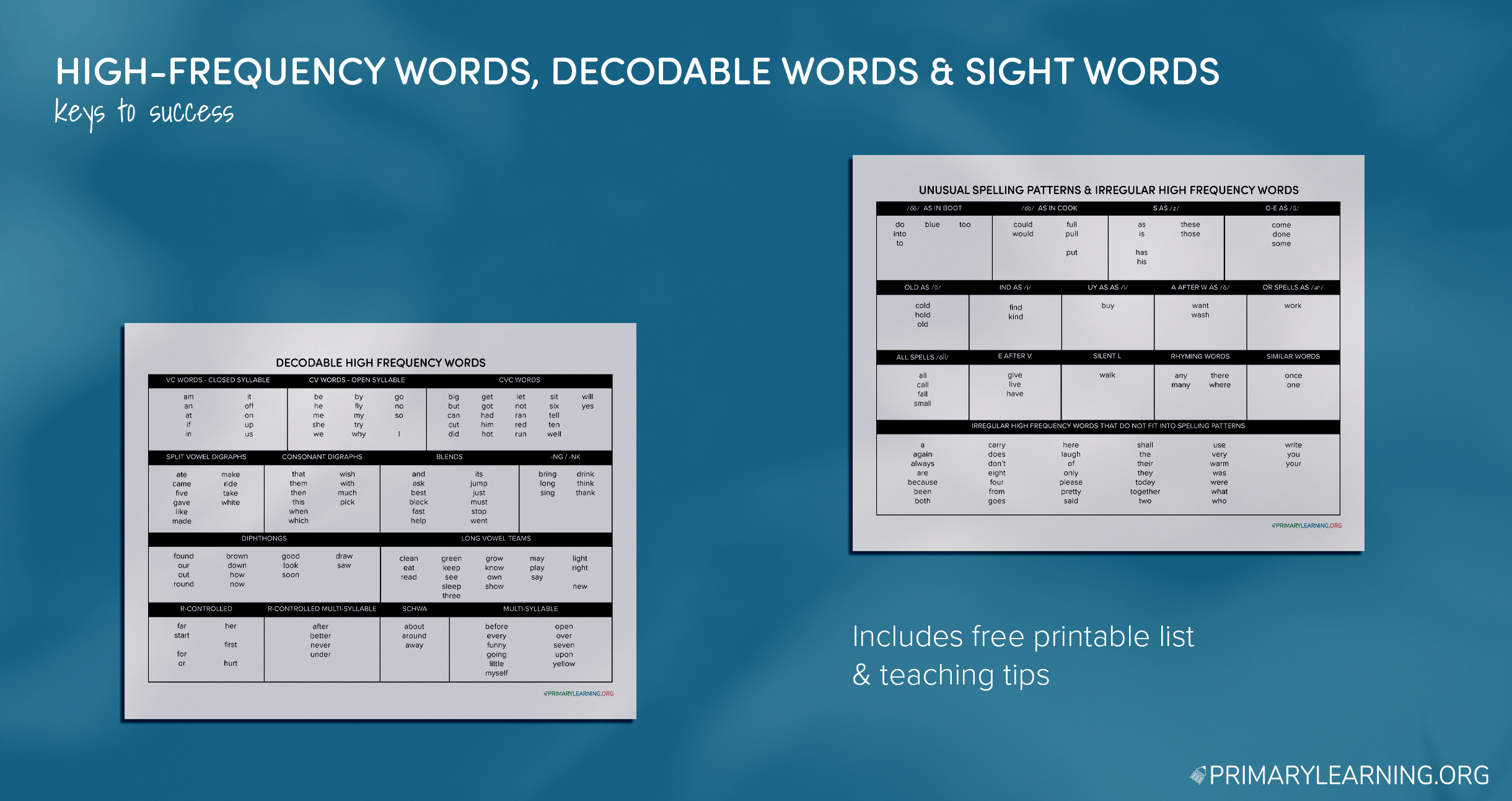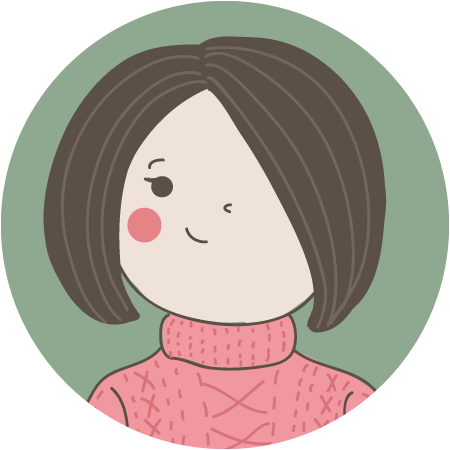

Posted by: Alesia Netuk
Updated: October 10th, 2023
High-Frequency Words, Decodable Words & Sight Words
High-Frequency Words, Decodable Words & Sight Words
High-frequency words are the words most commonly used in the written English language. While the English language has over 170,000 words, typically, adults use around 20,000 words1. A relatively small number appear so frequently in the printed text that they need to be addressed during instruction. Some words may be regular (as in big), and some may be irregular (as in the).
The good news is that we know which words to target during instruction. Only 25 words make up about one-third of printed material in English, and the first 100 words make up about 50% of all written English2.
Educators commonly use several high-frequency word lists: Dolch Sight Word List, Fry Sight Word List, and American Heritage Word Frequency Book. Those words fall into the following categories3:
Sight Words vs. High-Frequency Words
Traditionally, when educators refer to “sight words,” they refer to high-frequency words that students should recognize without having to sound them out. While these words may be irregular, they should not be defined as words that cannot be sounded out. Instead, reading researchers use a different definition for sight words, which does not focus on their irregularity.
What are Sight Words?
Sight words are high-frequency words that appear most frequently in written English. Readers extract the word’s spelling and meaning and store it in their long-term memory as a sight word.
Decodable High-Frequency Words
| VC Words – Closed Syllable When the vowel is followed by one or more consonants, it represents the short sound. |
am, an, at, if, in, it, off, on, up, us |
| CV Words – Open Syllable An open syllable ends with a vowel sound that is spelled with a single vowel letter. In an open syllable, the vowel says its name. |
be, he, me, she, we, by, fly, my, try, why, go, no, so, I |
| CVC Words When the word follows consonant-vowel-consonant (CVC) pattern, the vowel represents the short sound. |
big, but, can, cut, did, get, got, had, him, hot, let, not, ran, red, run, sit, six, ten, yes
tell, well, will – students easily learn that double consonants make one sound |
| Split Vowel Digraphs (Silent E) When the word has a silent e at the end, the previous vowel says its name. It is called a split digraph. A split digraph is a digraph that is split by a consonant. |
ate, came, five, gave, like, made, make, ride, take, white |
| Consonant Digraphs A consonant digraph is two consonants that spell one sound. |
that, them, then, this, when, which, wish, with, much, pick |
| Consonant Blends A blend is two consonants that come together and keep their sounds. |
and, ask, best, black, fast, help, its, jump, just, must, stop, went |
| NG/NK Ending It is called a glued sound. A glued sound is two consonants that come together and keep their sounds, but they are difficult to separate. |
bring, long, sing, drink, think, thank |
| Diphthongs A diphthong is two vowel sounds that slide together to make one sound. |
found, our, out, round brown, down, how, now good, look, soon draw, saw, found |
| Vowel Digraph A vowel digraph is two vowels that make one sound. |
clean, eat, read green, keep, see, sleep, three grow, know, own, show may, play, say light, right new |
| R-Controlled Vowel When a vowel is followed by an /r/ in a syllable, the vowel becomes “controlled” by the /r/ and makes a new sound. |
far, start for, or her first hurtafter, better, never, under |
| Schwa Sound The schwa sound is a vowel that makes the syllable unaccented. |
about, around, away |
| Multi-Syllable Words | before, every, funny, going, little, myself, open, over, seven, upon, yellow |
Irregular High-Frequency Words with Similar Spelling Patterns
| o, ue, oo spells /oo/ as in boot | do, into, to blue too |
| ou, u spells /oo/ as in cook | could, would full, pull, put |
| s spells /z/ | as, is has, his these, those |
| o-e spells as short /u/ | come, done, some |
| old spells long /o/ | cold, hold, old |
| ind spells long /i/ | find, kind |
| uy spells long /i/ | buy |
| a after w spells short /o/ | want, wash |
| or spells /er/ | work |
| all spells /oll/ | all, call, fall, small |
| v is followed by e (no words in English ends with v) | give, live, have |
| l is silent when followed by k | walk |
| rhyming words | any, many there, where |
| similar words | once, one |
Irregular High-Frequency Words
a, again, always, are, because, been, both, carry, does, don’t, eight, four, from, goes, here, laugh, of, only, please, pretty, said, shall, the, their, they, today, together, two, use, very, warm, was, were, what, who, write, you, your
Download the printable high-frequency word list here.
How to Teach High-Frequency Words
The research shows that readers store the “iregular” words in their memory, the same as “regular” words. The readers extract the word’s spelling (letter and pattern of letters in a word and associate it with the sound they represent) and store it in long-term memory as a sight word.
According to recent research, three parts of the brain must be activated to learn new words:
- The part where sound is stored;
- The part where meaning is stored;
- The part where spelling is stored.
That means successful instruction should activate all three parts of the brain. Orthographic mapping is the mental process readers use to store words permanently for immediate retrieval. Mapping words involves all three parts of the brain – the sounds (phonemes), the spelling (graphemes), and the meaning.
- Name the word and ask students to repeat it.
- Name the individual phonemes. Point out how many phonemes the word has. Let students place a chip in a box for each sound they hear.
- Spell each sound. Point out how many graphemes the word has. Let students write the word.
- Point out if the word has a regular, unusual, or irregular spelling pattern.
- Use the word in a sentence. Ask students to generate a sentence with a word and share it with the class.
Keys to success
LEARNING MATERIALS TO MEET EVERY CHILD’S NEEDS
Here, at PrimaryLearning.Org, we tend to deliver the best-differentiated learning materials to K-2 students. Our resources can be easily incorporated into multisensory lessons to meet every child’s needs, whether s/he is a visual, kinesthetic, or auditory learner.